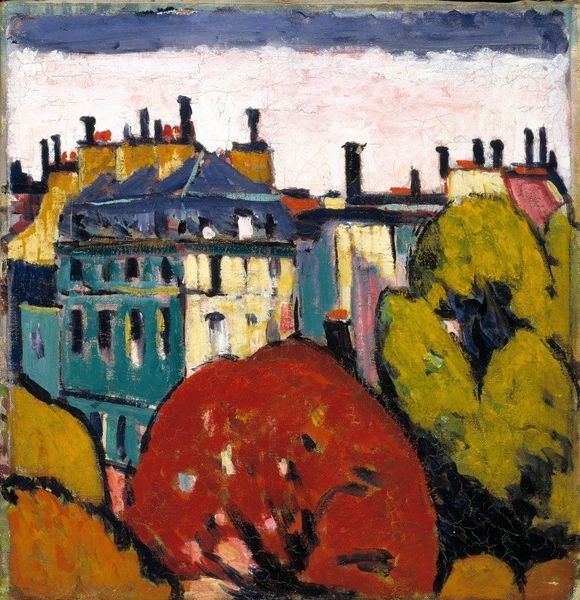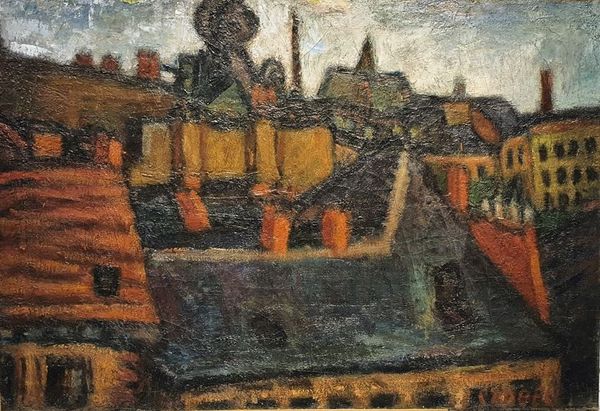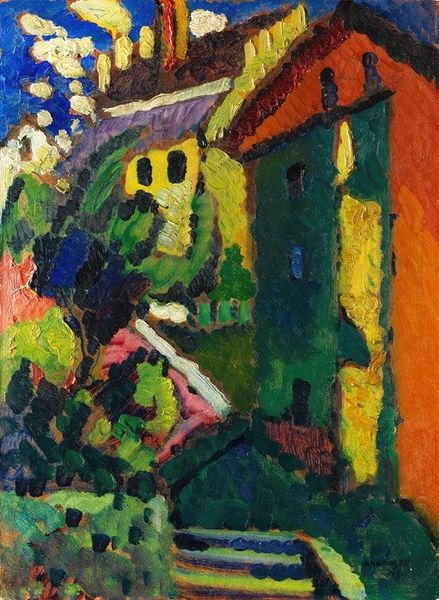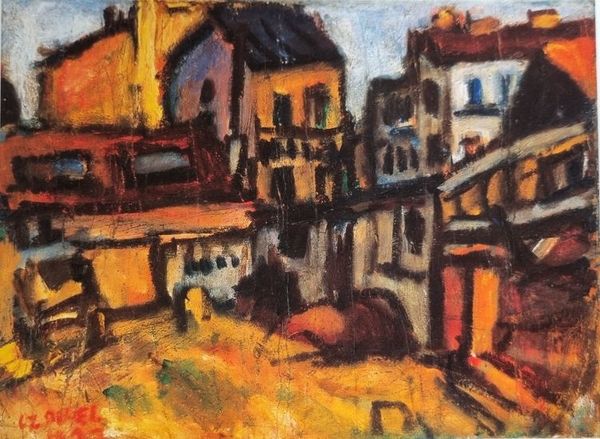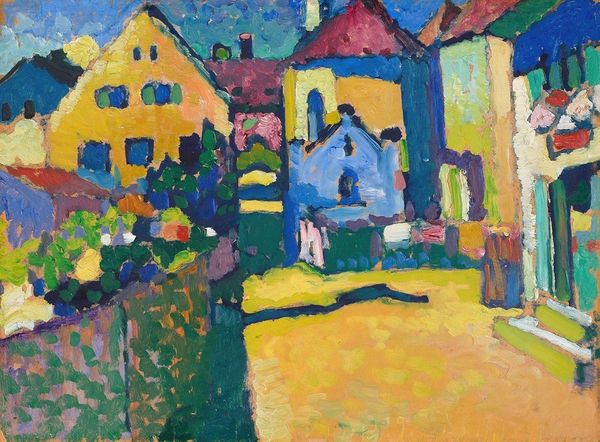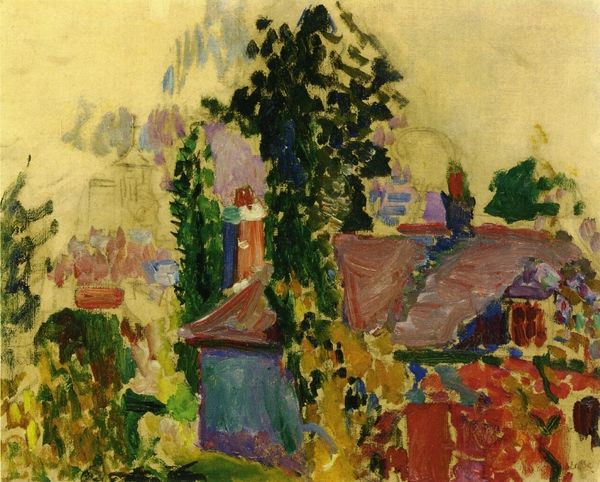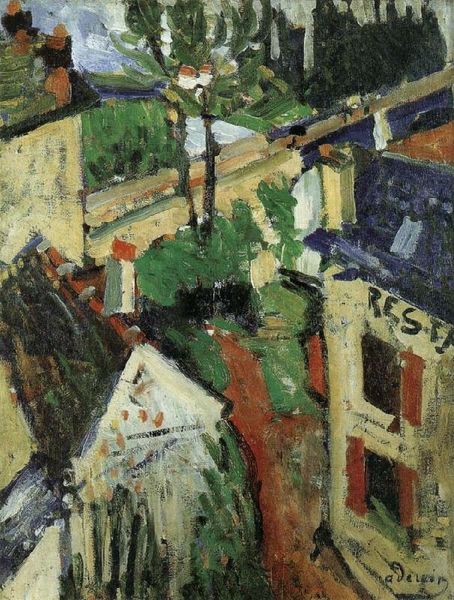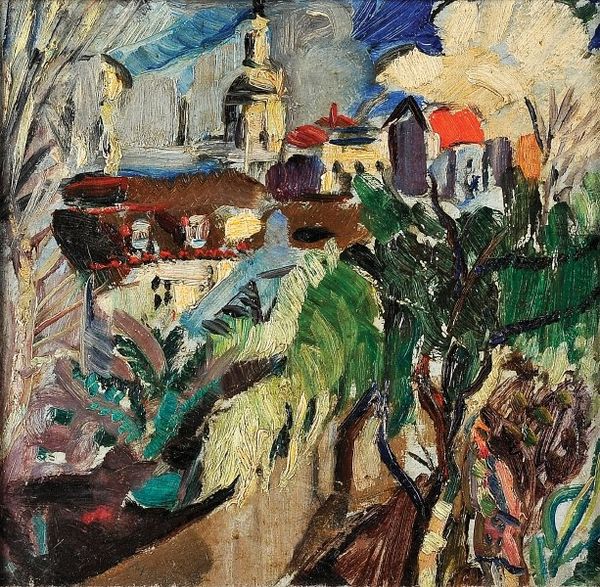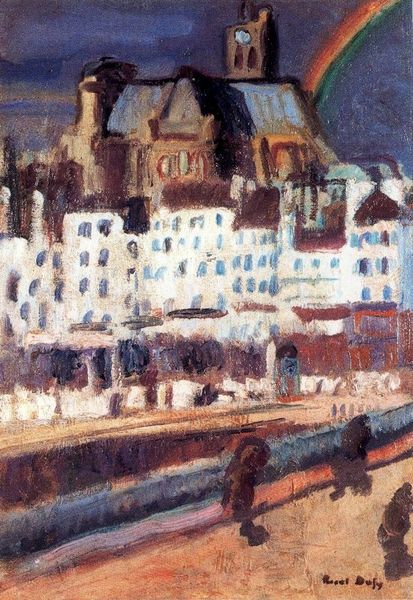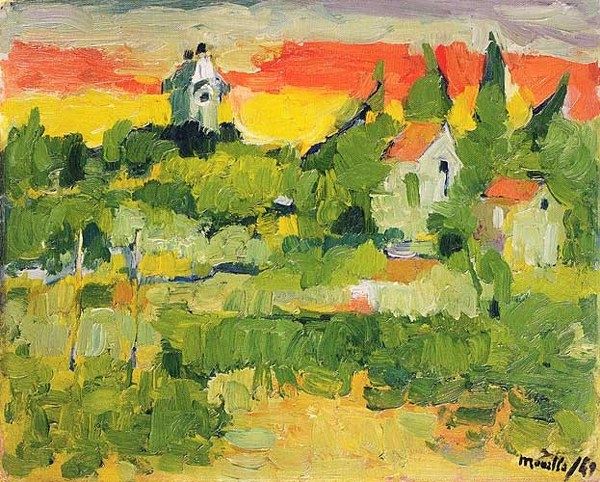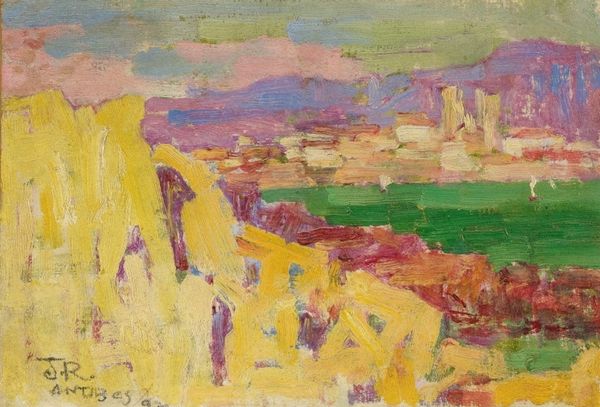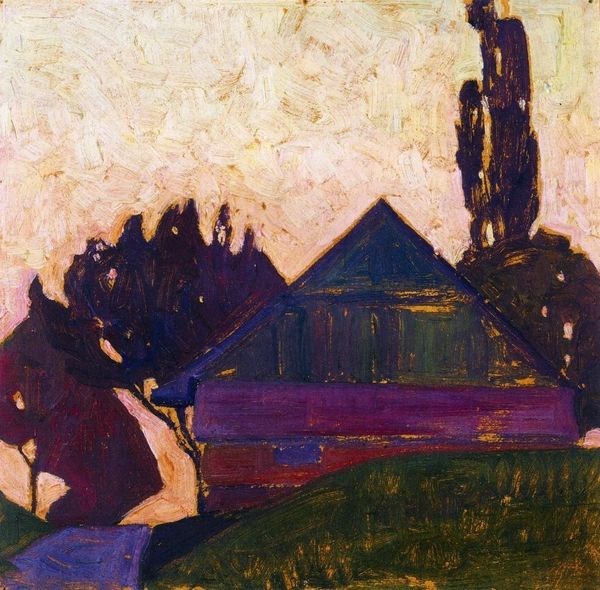
painting, oil-paint
#
fauvism
#
painting
#
oil-paint
#
landscape
#
german-expressionism
#
impressionist landscape
#
handmade artwork painting
#
expressionism
#
cityscape
#
painting art
#
modernism
#
expressionist
Copyright: Public Domain: Artvee
Curator: Henry Lyman Saÿen’s "St. Germain des Pres," likely created between 1909 and 1912, gives us a glimpse into his interpretation of the Parisian cityscape in oil paint. What are your first thoughts on this expressive view? Editor: Chaotic yet grounded. There is a sense of vibrancy through its brushstrokes but, there’s also something turbulent, a kind of off-kilter balance that reflects the period’s own shifting landscapes of politics and culture. Curator: It does feel imbued with that sense of rapid change. You see Fauvist color explosions and the clear influence of Expressionism with the flattened space and emphasis on the subjective, emotional response to the scene. What symbols do these elements communicate? Editor: I see an era grappling with new perspectives. Notice how the red mass at the bottom dominates; it’s both grounded and obscuring, pushing against traditional urban landscapes and their celebrations of progress. It almost screams the anxiety and discomfort beneath the surface of modernity, wouldn’t you agree? Curator: I would say that anxiety manifests itself via its dynamic application of color. I feel a need to question if red has more than an aggressive meaning. Perhaps it could signify not anxiety, but also cultural vitality as it draws the viewer into a new, intimate interaction with something so simple as trees. Editor: That brings a different texture into view. The trees in this cityscape might also represent society, pushing into spaces with organic fervor; in this case, the artist has brought a whole new symbolism through expression. In the painting itself we see a metaphor being created of societal growth. Curator: That reminds me of other American artists who sought new modes of representation to match the cultural upheavals they witnessed in Europe. It does not simply imitate or romanticize the cityscape, but transmits a palpable mood. Editor: Absolutely, Saÿen's canvas feels almost prophetic in its unrestrained exploration. His expression of urbanization brings to view new symbols of city life which at first could be easily missed in older traditional art. Curator: This painting showcases Saÿen’s talent for combining raw emotion with a clear-sighted view of early 20th-century artistic revolution, opening a window into that tumultuous, exciting period. Editor: Right, and hopefully offering viewers new ways of interpreting not just art, but their own experiences within shifting urban realities.
Comments
No comments
Be the first to comment and join the conversation on the ultimate creative platform.
